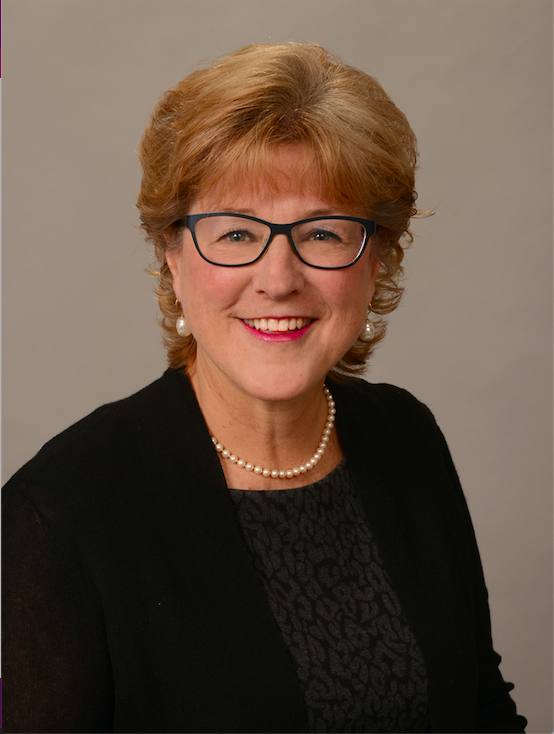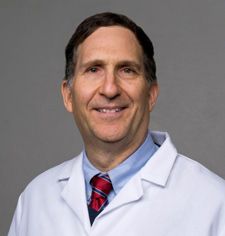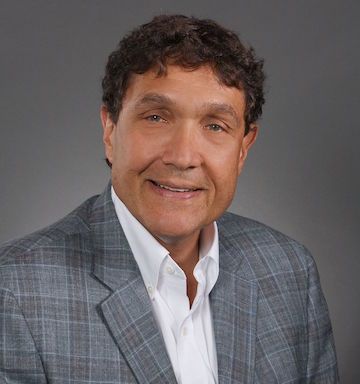Article
Dr Gerard Criner Offers Insights on Early COPD Diagnosis, Next Steps for Triple Therapy
Author(s):
Gerard Criner, MD, FACP, FACCP, offers insights on the next steps for triple therapy, challenges of early COPD diagnosis, and how the pandemic could impact long-term lung health.
Although chronic obstructive pulmonary disease (COPD), is among the leading causes of death in the United States, many challenges remain when it comes to diagnosis, treatment, and management. Now, with coronavirus disease 2019 (COVID-19) threatening to damage even healthy lungs that become infected, pulmonologists are concerned the disease could lead to an uptick in COPD diagnoses or other lung related-issues in the long term, said Gerard Criner, MD, FACP, FACCP, an interview with The American Journal of Managed Care® (AJMC®).
Criner is a professor and chair of the Department of Thoracic Medicine and Surgery at the Lewis Katz School of Medicine at Temple University. As an active clinical investigator in advanced lung diseases, primary COPD, pulmonary fibrosis, and respiratory failure, Criner offered his thoughts on the next steps for triple therapy, challenges in diagnosing early COPD, and lessons learned from the COVID-19 pandemic.
The following interview has been edited for length and clarity.
AJMC®: Triple therapy can be associated with increased risks of pneumonia. An analysis of IMPACT trial data showed an increased incidence of pneumonia in patients in Asia compared with those outside of Asia. An additional analysis comparing Western Europe and North American regions found an inhaled corticosteroids (ICS) class effect of increased pneumonia incidence in North America but not in Western Europe. What factors contribute to these findings?
Criner: That finding isn't a first finding. That's been demonstrated before in Asian populations. They have a higher increase of pneumonia with ICS use compared to trials that have been done outside of Asia, such as in the United States or in Western Europe. There's a number of factors [contributing to] that.
It might be something to do with the environment, with the prevalence of other types of infections such as tuberculosis that may cause bronchiectasis, or more structural airway abnormalities that lends to colonization with organisms that may predispose to pneumonia. Some might be due to host factors. Childhood illnesses may be different in one part of the world than the other one.
There also could be environmental causes that could contribute to it. It may just be as simple as that some patients in Asia are leaner than patients in non-Asian populations. It could be the relative dose of steroids that the patient receives could be greater because their body mass is lower. It could be just that the clinical care is different, that the use of x-rays in the diagnosis of pneumonia might be more frequent in Asian populations because the clinical paradigm there might be to consider pneumonia based on clinical parameters or the use of radiographs [compared with] other cultures. The exact reasons aren't known.
AJMC®: The IMPACT and ETHOS trials found beneficial effects of triple therapy vs dual therapy on mortality. But this was only in symptomatic COPD patients who had a history of frequent and/or severe exacerbations and who were previously receiving maintenance therapy with triple therapy, long-acting beta2-agonists/ICS, or single or dual long-acting bronchodilators. The GOLD 2021 report stated, "Future analyses or studies may help determine whether other specific patient subgroups demonstrate a greater survival benefit." In your opinion, which patient subgroups ought to be studied next? What are the next steps for research into triple therapy?
Criner: The 2 studies that you just mentioned that showed that there was a survival advantage, those were prespecified analyses, but they weren't the primary outcomes of the studies. The FDA and other regulatory bodies have not approved the use of triple therapy to improve survival in patients who were in those studies. I think that's the first place to start: an approved indication for the use of inhaled triple therapy for patients with COPD. We would like to see that as approved therapy. I think that it's not a stretch now that the 2 studies that you mentioned and the pooled analysis from the TRINITY and TRELEGY studies also showed an improved survival in a pooled analysis of those studies.
We believe that it's true, it's a class effect; that in the appropriate patients, triple therapy improves survival. Those studies, as you mentioned, [were conducted on patients who] were highly symptomatic, people with frequent or severe exacerbations. The other patient groups that would benefit from this are people who aren't as symptomatic, who are still with severe exacerbations.
Should triple therapy be something that every patient who's hospitalized receive on exit from the hospital and remain on therapy for a period of time? Those are the patient groups I think we need to study, people that have severe exacerbations, [who] are hospitalized but may not be as symptomatic. How long should they be placed on triple therapy? I think we also need to solidify the patient groups that were studied in ETHOS and IMPACT to get an approved indication for triple therapy.
AJMC®: Can you elaborate on some of the limitations of using the forced expiratory volume in 1 second/forced vital capacity (FEV1/FVC) ratio to diagnose COPD?
Criner: COPD is more than just an airways disease. There's a lot of symptomatology, morbidity, and mortality that's outside of what can be measured from the FEV1, such as comorbid clinical conditions and important changes COPD [has] on musculoskeletal strength activity. That's one limitation: that any spirometric measure, just not the FEV1/ FVC, is important in characterizing the burden of disease that patients with COPD have. Besides that, the FEV1/FVC just measures the degree of airflow obstruction. We know that some patients can have significant smoke-related or other host factor–related (such as environmental pollutants, etc) changes in lung function and can develop emphysema that may not be reflected by airflow obstruction. That definitely is a trait that patients have that importantly contributes to their outcome.
There are also patients where an absolute cut point of FEV1 to FVC does not identify the burden of their disease or their likelihood of developing COPD later. There are people who surround the border, the threshold variable for FEV1/FVC, which is currently 70%. Patients can still have significant symptoms in outcome; that's been shown in several studies now, where patients can have preserved spirometry and still be symptomatic with COPD-like symptoms and respond to treatment and have a differential outcome. There are several limitations to just using a threshold variable of obstruction identified by the FEV1/FVC ratio.
AJMC®: What are some of the challenges involved in early COPD diagnoses or designating individuals as having pre-COPD?
Criner: There's ups and downs about trying to do that. One of the things that we would like to do is identify patients who have an earlier phase of COPD or a predilection to develop COPD, patients who are at risk, and be able to intercede before they get fixed airflow obstruction. The problem is that not everyone who has symptoms of mucus hypersecretion, or cough, or shortness of breath go on to develop COPD. You don't want to label patients with a disease when they don't have a disease or even a path to develop the disease. Because the stigma and the consequences and the likelihood of overtreatment for that patient group could be worse than having the label of the disease to begin with.
I think, overall, we need better ways to detect patients who are predisposed to develop COPD, that currently we don't have. Patients' symptoms aren't robust enough to do that. Radiographic imaging carries another risk for people who use it at a younger age. That may increase the cost of care, but also, needless exposure to radiation isn't something that we want to do. We don't have a specific and straightforward biomarker that can indicate patients who are at risk for COPD, like we have for patients who may be labeled prediabetic based on a biomarker such as glycosylated hemoglobin.
There's clearly more work that needs to be done to enhance our ability to capture patients who are at risk for developing COPD, before they have intractable airflow obstruction that exists. Currently, we don't have that, but we need to work hard to try to discover that.
AJMC®: Reports of COPD exacerbations have decreased since the pandemic due, in part, to reduction in external exposures. Is there anything that pulmonologists can learn from the lockdown and implement going forward when it comes to improving disease management?
Criner: We've seen that both in clinical trials and also in clinical practice that patients developing acute exacerbations of airflow obstruction, whether they have COPD or asthma, are both less. At our institution so far this year, we've only seen 2 documented cases of influenza, which is markedly different from what we see in any other year. Prevention of aerosol contact with one individual for another one is something that has been the only good benefit that I can see of COVID-19, with social isolation, wearing masks, and better hand hygiene. I think we can learn a lot from that, that [during] peak seasons of the year where populations are at risk, perhaps using those preventative measures would be something that could be very important to lessen the morbidity and mortality associated with viral and bacterial infections that occur throughout the winter months when people are in closer quarters.
AJMC®: It's been proven now that COVID-19 can result in both short- and long-term lung damage. Do you anticipate any long-term impacts of COVID-19 on otherwise healthy lungs that could potentially lead to an uptick in COPD diagnoses or other lung-related issues?
Criner: Yes, unfortunately, I think we will see that, and we have been seeing that. The true magnitude of that problem isn't really clear right now. We thought that, based on the prior experiences with severe acute respiratory syndrome [SARS] 1, that incidence might be 1% to 2% at most, that the likelihood of persistent problems would not be greater than SARS 1. But it appears that it probably is slightly greater. How greater, it isn't known.
For the most part, obstructive airways disease doesn't seem to be as prevalent as parenchymal inflammatory disease with fibrotic changes or with persistent ground glass opacities, which appear to be much more apparent. But I think we'll know a lot more in the next 6 to 12 months [regarding] how many patients have this problem, what the nature of that problem is, and is it only patients with severe COVID-19 infection, hospitalized, or [in] an intensive care unit? Or even in people with milder forms of infection who never were hospitalized? What is the nature of their problem in the long term?
Newsletter
Stay ahead of policy, cost, and value—subscribe to AJMC for expert insights at the intersection of clinical care and health economics.


